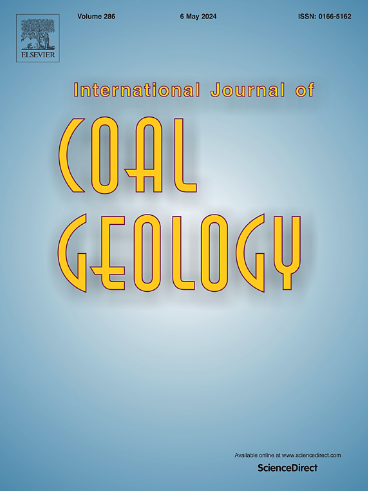Wood-degrading fungal origin of perylene in peatlands of southern Poland: A molecular and statistical approach
IF 5.6
2区 工程技术
Q2 ENERGY & FUELS
引用次数: 0
Abstract
Perylene is a polycyclic aromatic hydrocarbon (PAH) whose origin remains enigmatic. It has been thought to be derived from hydrocarbons, however much uncertainty remains over whether it is natural or anthropogenic. In this study, a comprehensive study of peat was conducted in the Osobłoga and Kłodnica River Valleys of southern Poland. Here, we show a significant advance in our understanding of the source of perylene using a detailed analysis of macro and minor elements along with its correlation with other PAHs and biogenic compounds. Based on principal component analysis (PCA), a negative correlation between perylene and combustion-derived PAHs was demonstrated, suggesting different origins for these compounds. Diagnostic ratios, such as %Pe/∑PAH and %Pe/∑PAI above 10 %, and a Py/Pe ratio below 9, indicate that the perylene present in these peat samples is of natural origin, formed from terrestrial organic matter. Furthermore, perylene is associated with a dominance of long-chain n-alkanes, which exhibit a strong odd-over-even preference, further supporting its biogenic source. The analysis revealed a weak correlation between total organic carbon (TOC) and perylene content, indicating that perylene concentration does not directly depend on the overall organic carbon content in peat. In contrast, a strong correlation was observed between perylene and wood-type biogenic compounds, specifically periderm (correlation coefficient of 0.2) and wood (correlation coefficient of 0.3). This finding suggests that perylene formation is closely linked to woody biomass. The Conifer Wood Degradation Index (CWDI) was calculated for samples containing conifer wood phytoclasts, providing insights into the degradation processes affecting these components and their relation to perylene formation. Further molecular and statistical studies on Vistulian and Holocene peats in our study also confirm the hypothesis of a natural, specifically fungal, origin of perylene. A comprehensive analysis of peat deposits, combined with advances in molecular and statistical techniques, continues to elucidate on the complex biogeochemical processes that contribute to the presence of perylene in natural environments.
波兰南部泥炭地苝的木材降解真菌起源:分子和统计方法
苝是一种多环芳烃(PAH),其起源仍然是一个谜。它一直被认为是来自碳氢化合物,但它是自然的还是人为的仍有很多不确定性。在这项研究中,对波兰南部Osobłoga和Kłodnica河谷的泥炭进行了全面的研究。在这里,我们展示了我们对苝的来源的理解显著进步,通过对宏观和次要元素的详细分析,以及它与其他多环芳烃和生物源化合物的相关性。基于主成分分析(PCA),苝与燃烧衍生的多环芳烃呈负相关,表明这两种化合物的来源不同。%Pe/∑PAH和%Pe/∑PAI比值大于10%,Py/Pe比值小于9,表明该泥炭样品中苝为天然来源,由陆源有机质形成。此外,苝与长链正构烷烃的优势相关联,表现出强烈的奇偶偏好,进一步支持其生物源。分析结果表明,总有机碳(TOC)与苝含量之间的相关性较弱,表明苝浓度与泥炭中总有机碳含量没有直接关系。聚苝与木型生物源化合物有较强的相关性,特别是周皮(相关系数为0.2)和木材(相关系数为0.3)。这一发现表明苝的形成与木质生物质密切相关。计算了含针叶林植物碎屑样品的针叶树木材降解指数(CWDI),深入了解了影响这些成分的降解过程及其与苝形成的关系。在我们的研究中,对维斯图尔纪和全新世泥炭的进一步分子和统计研究也证实了苝的自然来源,特别是真菌来源的假设。对泥炭沉积物的综合分析,结合分子和统计技术的进步,继续阐明导致自然环境中苝存在的复杂生物地球化学过程。
本文章由计算机程序翻译,如有差异,请以英文原文为准。
求助全文
约1分钟内获得全文
求助全文
来源期刊

International Journal of Coal Geology
工程技术-地球科学综合
CiteScore
11.00
自引率
14.30%
发文量
145
审稿时长
38 days
期刊介绍:
The International Journal of Coal Geology deals with fundamental and applied aspects of the geology and petrology of coal, oil/gas source rocks and shale gas resources. The journal aims to advance the exploration, exploitation and utilization of these resources, and to stimulate environmental awareness as well as advancement of engineering for effective resource management.
 求助内容:
求助内容: 应助结果提醒方式:
应助结果提醒方式:


